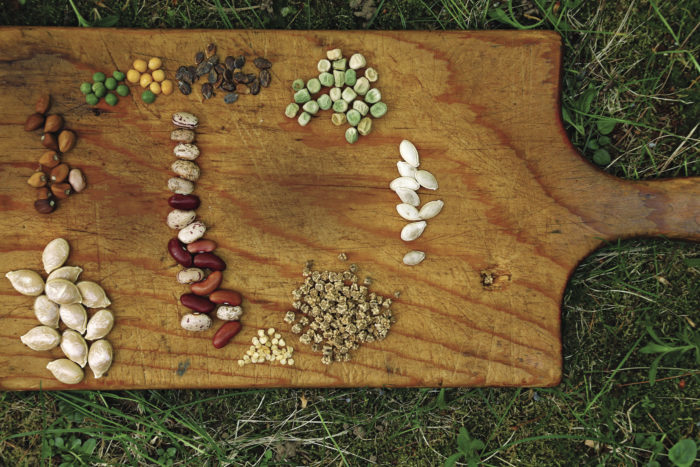
For most of today’s gardeners, the growing season begins with a spring seed catalog. But for those who save seeds from year to year, the next growing season begins as the current one comes to a close. Why go to the trouble of saving seeds each year? There are a number of reasons: Seed saving is a way for gardeners to save money, increase self-sufficiency, adapt varieties to local conditions, and preserve rare varieties that might not be widely available. Saving your own seeds should not be daunting. Start gradually with a few of your favorite annual crops (flowers or vegetables), and incorporate other types as you grow more comfortable. Here are a few basics to get you started.
 |
 |
Start with an open-pollinated source
Open-pollinated vegetables and flowers, including heirlooms, are generally the only type of plants that you can successfully propagate, year after year, with homegrown seeds. Hybrids (also referred to as “F1s”) produce seeds that will not grow into the same plants reliably; they’re strictly good for one generation. So if you’re looking to save seeds, stay away from a seed packet labeled as “hybrid” or “F1.” If it doesn’t list those terms, chances are that it is an open-pollinated variety and you should be fine.
Tip: Once your seeds have been properly grown, harvested, and stored, consider sharing some with friends and neighbors or at seed swaps. The more gardeners there are growing a plant, the less likely it is to disappear.
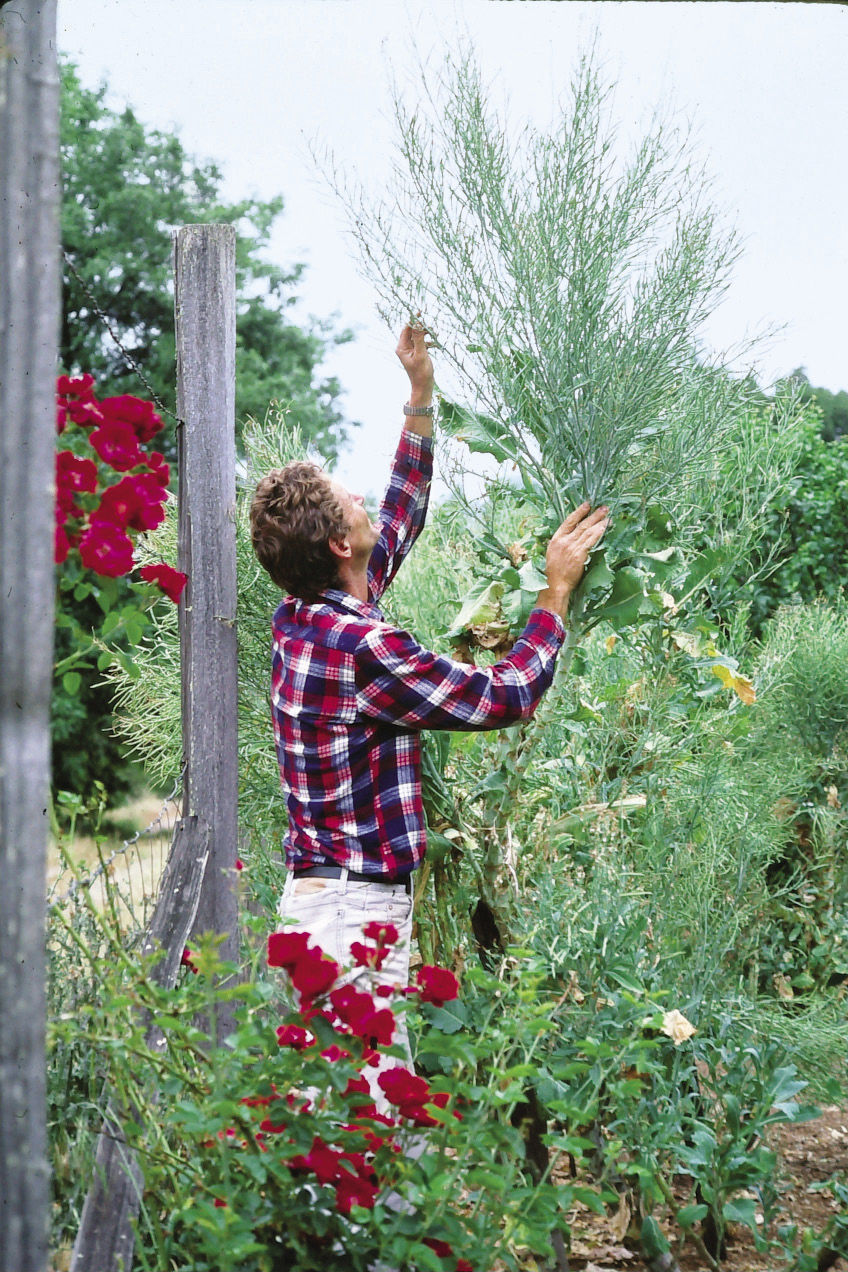
Learn your plants’ life cycle to know when to harvest
Watermelons, lettuce, and eggplant all produce seeds in their first year of growth, and we refer to them as “annuals.” Winter radishes and kale require a period of cool temperatures between their initial growth phase and their seed-producing phase, and so we refer to these as “biennials.” It is important to know when your plants will produce seed and when those seeds are ready for harvest. Beans, lettuce, peas, spring radishes, flowers, and herbs produce seeds in one year, and the seeds are ready to harvest when the flowers or seedpods dry out and the seeds become hard. Tomatoes, melons, squash, and watermelons produce seeds in one year, too, but their seeds are ready to harvest just after the point at which the fruit would be eaten.
Clean the seeds using a specific method
Seeds should be cleaned thoroughly after harvest, which might involve one of the following techniques:

1. Rinsing
Pepper, melon, and squash seeds simply need a rinse after they are scooped out of the ripe fruit. Put the seeds in a colander, and rinse them with cool water to remove as much clinging flesh as possible. Allow them to air-dry before storing.
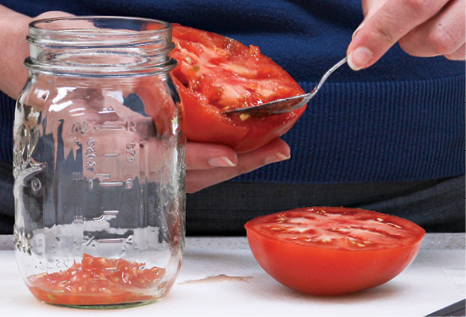
2. Fermenting
Tomato and cucumber seeds benefit from a brief period of fermentation after they are extracted from the fruit. Scoop out the seeds, juice, and a bit of pulp, and place the material in a container. Let the mixture sit out—not in direct sunlight—at room temperature, and stir the mixture every day. After two to three days, good seeds will settle to the bottom of the container. Pour off the pulp, rinse the seeds well, and set them out to dry.
 |
 |
3. Threshing and winnowing
Dense, dry seeds, like beans and some flowers, can be separated from chaff (pods, flower parts) by threshing and winnowing. Threshing involves applying force to seedpods to crack them open and liberate the seeds; for beans and peas, fill a pillowcase with dry bean pods and stomp on it. Once the seeds have been threshed, pour the contents of the pillowcase or other container in front of a fan. The lighter chaff will be blown away (winnowed), while the heavier seeds will fall down into a waiting bucket.
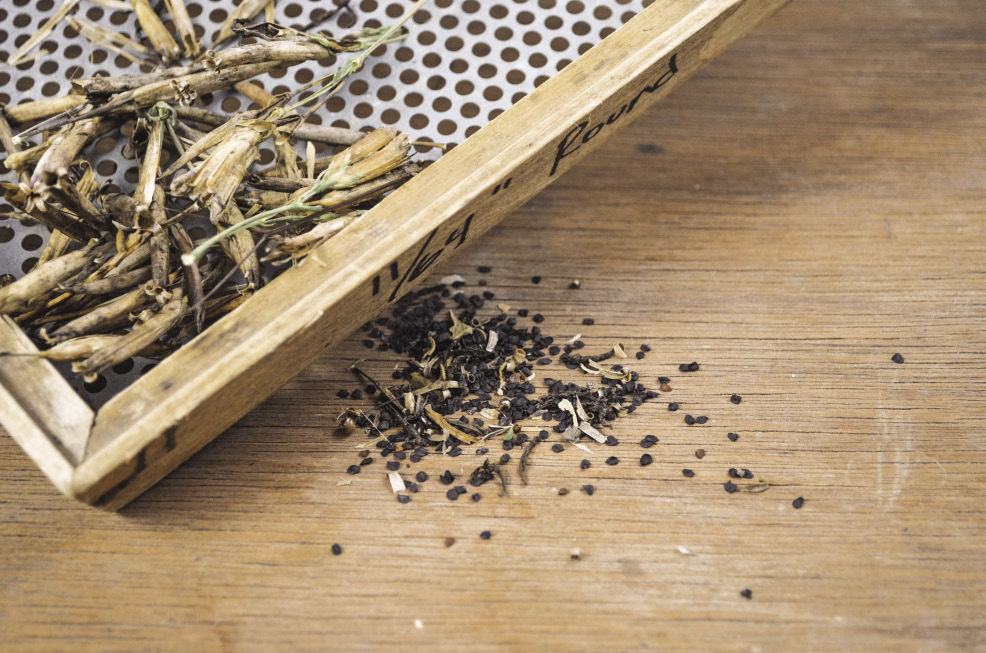
4. Screening
Lettuce seeds and many flower seeds are too light to winnow. To separate seeds and chaff after threshing, use a mesh material (hardware cloth or fine-gauge colander, for example) that allows seeds to pass through it but catches the chaff.
| BASICS |
Get an understanding of the birds and the bees—and the wind
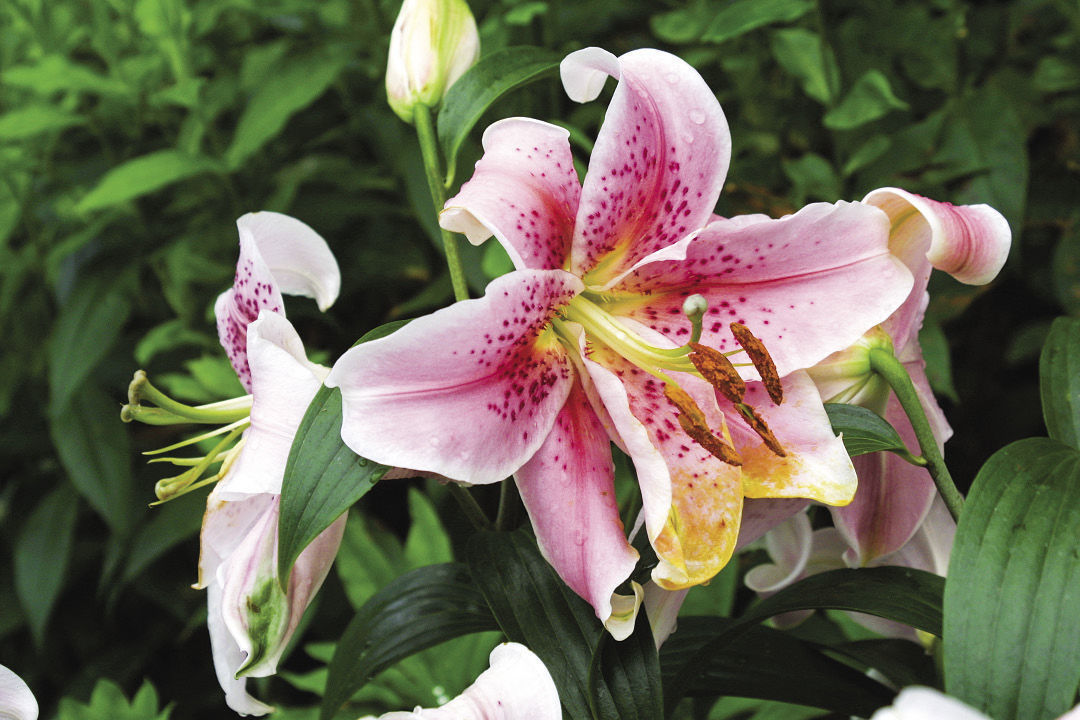
Seeds are produced—as humans are—through sex. Pollen produced by a parent plant interacts with a plant’s stigma (which might or might not belong to a different plant), fertilization occurs, and a seed is formed. The process of moving pollen from an anther to a stigma (pollination) involves gravity, insects, wind, or other vectors. Several plants have the ability to pollinate themselves, while others do not.
If pollen moves between two like parents, the seeds produced will grow into plants that look, taste, and grow like those parents. If pollen moves between two different parents (with few exceptions, these parents must belong to the same species), the seeds produced might be quite different than either parent. Keep the flow of pollen between like parents only to save seeds that will grow up to look and taste as you expect. If you’re concerned about inadvertent cross-pollination, you can do this by netting off your plants and pollinating by hand.
To put it another way, ‘Brandywine’ tomato + ‘Brandywine’ tomato = ‘Brandywine’ tomato. ‘San Marazano’ tomato + ‘Brandywine’ tomato = ?
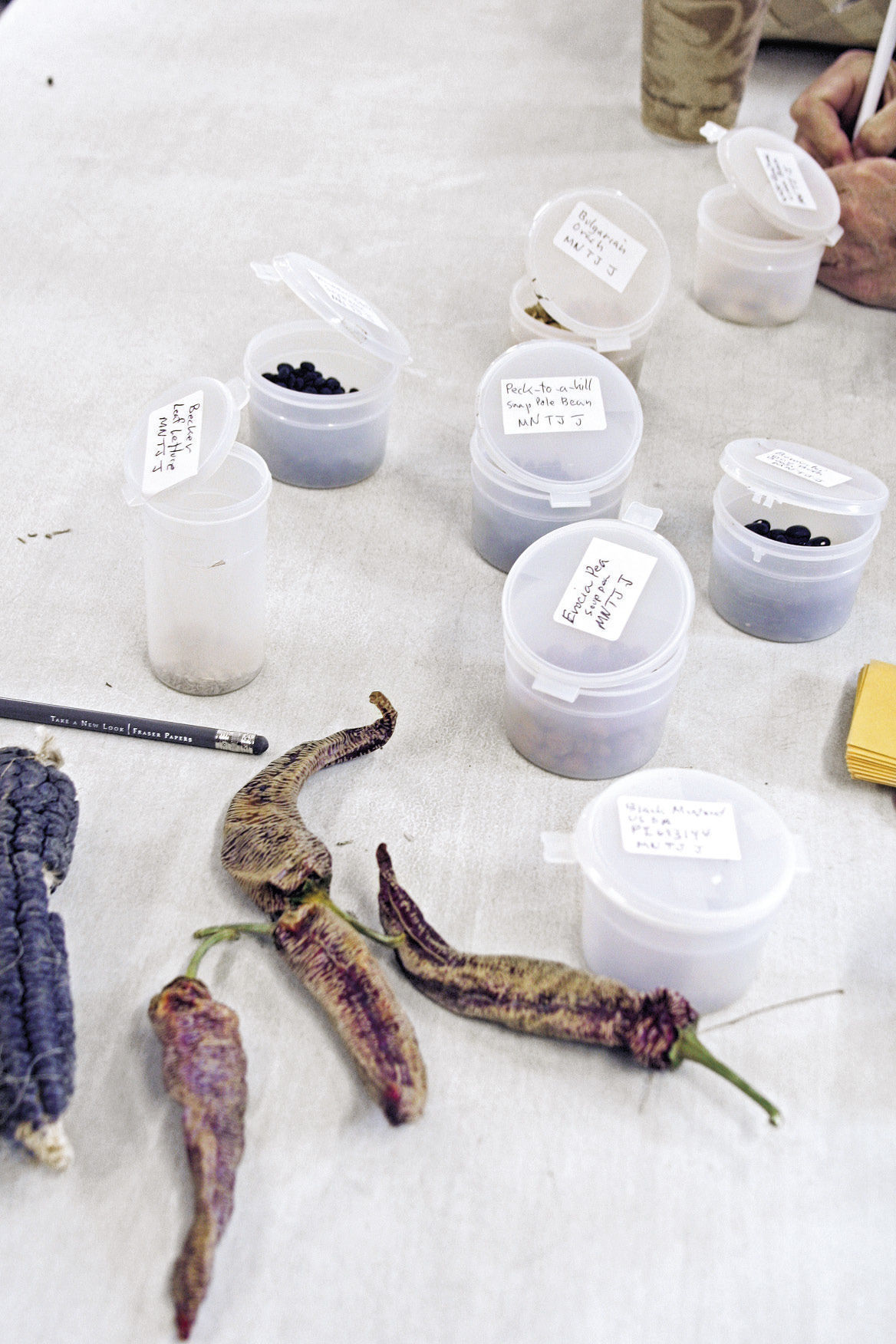
Store seeds in a cool, dry, and dark place
Seeds should be completely dry before storing them. A seed will shatter when struck with a hammer or snap cleanly when bent if it is dry enough for storage. Store seeds somewhere that is cool, dry, and dark; any moisture or light could trigger sprouting, which ruins seeds’ viability. It is important that the seeds are maintained at a fairly consistent temperature; they should avoid regular freezing and thawing phases, which can also ruin their ability to reproduce. With proper storage, seeds can remain viable for many years.

Harvest only healthy seeds
Harvest seeds from your healthiest plants, never from diseased ones. Don’t bother holding onto seeds that appear dehydrated, discolored (photo of corn seed, top left), moldy, or damaged in any way. Look, instead, for a seed that is plump and uniformly colored (photo of corn seed, top right). Save seeds for a single variety from many different fruits and as many different plants as possible. This increases the likelihood of having a crop of seeds that will sprout reliably and produce healthy offspring.
Grant Olson is the public-programs manager and a seed-preservation educator with Seed Savers Exchange in Decorah, Iowa.
Photos, except where noted: Danielle Sherry; David Cavagnaro/courtesy of Seed Savers Exchange; Todd Meier; Grant Olson/courtesy of Seed Savers Exchange; Ann E. Stratton; Michelle Gervais
Fine Gardening Recommended Products

Corona E-Grip Trowel
Fine Gardening receives a commission for items purchased through links on this site, including Amazon Associates and other affiliate advertising programs.

Corona® Multi-Purpose Metal Mini Garden Shovel
Fine Gardening receives a commission for items purchased through links on this site, including Amazon Associates and other affiliate advertising programs.

A.M. Leonard Deluxe Soil Knife & Leather Sheath Combo
Fine Gardening receives a commission for items purchased through links on this site, including Amazon Associates and other affiliate advertising programs.

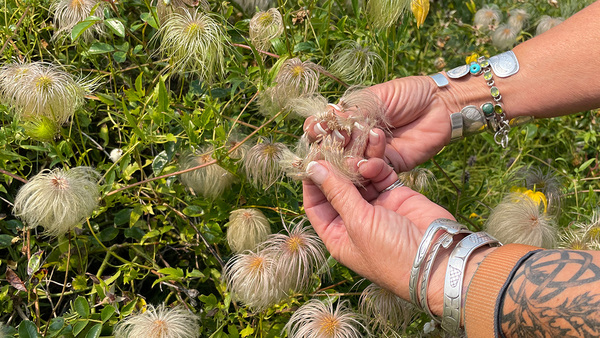

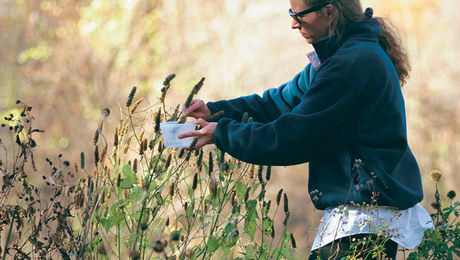














Comments
Log in or create an account to post a comment.
Sign up Log in